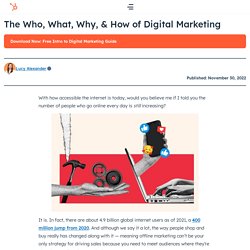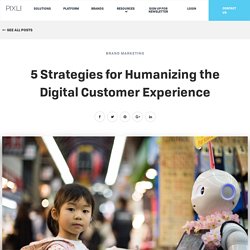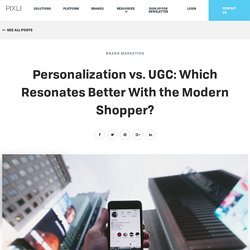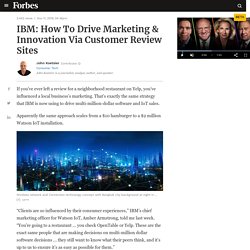

Deep Nostalgia, un service de MyHeritage à utiliser avec précaution. Vous avez peut-être vu passer, ces derniers jours, sur les réseaux sociaux ou sur un site d’information, un portrait de personnage célèbre, un tableau, une sculpture ou une photographie en noir et blanc, qui prenait vie comme par magie : cette image a sans doute été transformée en vidéo grâce à l’intelligence artificielle (IA) Deep Nostalgia.

Ce service est accessible au grand public et simple d’utilisation : il suffit de se créer un compte sur le site MyHeritage, d’y télécharger un portrait quel qu’il soit et d’attendre une trentaine de secondes pour le voir s’animer. Nous recommandons toutefois d’observer vis-à-vis de Deep Nostalgia une certaine prudence. Ce service est donc fourni par MyHeritage, une entreprise israélienne spécialisée dans les arbres généalogiques, qui commercialise, y compris sur son site francophone, un kit d’analyse du génome à destination des particuliers – service, pourtant, parfaitement illégal en France. Les marchés financiers se soucient-ils de la communication des ONG sur les réseaux sociaux ? Face aux scandales sociaux et environnementaux, les organisations non gouvernementales (ONG) déploient diverses stratégies pour influencer les pratiques et rendre plus vertueuses les entreprises.

How Culture Influences Creativity Across Countries. About creativity and culture Creativity – the generation of novel and useful outcomes – is a source of competitive advantage for organizations all over the world.

Teresa Amabile suggests in her work that, in order to be creative, individuals need to possess all those three dimensions: creativity-relevant skills, domain-relevant knowledge, and task motivation, in order to come to creativity outcomes in their work. How culture influences creativity across countries is still very much a point of debate.
While the importance of creativity is global, how culture influences creativity across countries is still very much a point of debate. A culture is said to be composed of cultural values, and these values are mostly identified through the work of Geert Hofstede. Pandemic Tantrums? Enter the Robot Playmate for Kids. Reviving High-Touch Business Models for the Social Distancing Era. The demand for many products and services has evaporated over the past several months as consumers have altered their typical patterns while adhering to stay-at-home orders and social distancing practices.

But a unique set of businesses that may evoke feelings of nostalgia for some — including milk and frozen-food delivery services, and drive-in theaters — are attracting renewed interest. Such business models were quite prominent in the past but fell out of favor due to excessive costs, inconvenient distribution, or changes in consumer behavior. In the current era of social distancing, however, their high-touch, high-contact features are very desirable.
This article documents the resurgence of interest in high-touch businesses, provides specific “old made new” questions to help professionals illuminate creative value propositions their companies can pursue, and describes how technology can enhance a full-service approach. Research Updates From MIT SMR Please enter a valid email address 1. Changes in Consumer Behavior: Rising Retail Categories. Innovation pour les entrepreneurs: de l'idée au marché. Blockchain makes digital marketing more transparent. What is Blockchain?

Blockchain technology has been in the news for the past few years. Almost everybody in the corporate world has heard of it, one way or other. However, only a few know what exactly this buzzword is all about. In this world of cyber-crime and data theft, no one wants to compromise on data security. It is of utmost importance. The Who, What, Why, & How of Digital Marketing. With how accessible the internet is today, would you believe me if I told you the number of people who go online every day is still increasing?

It is. In fact, "constant" internet usage among adults increased by 5% in just the last three years, according to Pew Research. And although we say it a lot, the way people shop and buy really has changed along with it — meaning offline marketing isn't as effective as it used to be. Marketing has always been about connecting with your audience in the right place and at the right time. Today, that means you need to meet them where they are already spending time: on the internet. Enter digital marketing — in other words, any form of marketing that exists online. → Click here to download our free guide to digital marketing fundamentals [Download Now]. 5 Strategies for Humanizing the Digital Customer Experience - The Pixlee Blog. Digital marketing has transformed both since its somewhat recent nascency.

In many ways, digital marketing tactics have up-leveled customer experience, especially as most websites evolve beyond web 1.0 experiences. In the hustle to make websites rank favorably in search and reduce bounce-rate, its surprisingly easy to lose sight of those who are actually experiencing the digital world: humans. It’s estimated that only about 22% of businesses prioritize the customer experience. There is an increasing gap between how businesses function and how they are perceived by the common person. Machines are doing the very thing we’ve intended them not to do: removing the personal touch necessary for brand affinity. Personalization vs. UGC: Which Resonates Better With the Modern Shopper? - The Pixlee Blog. Personalization and User Generated Content (UGC) are integral parts of any ecommerce marketing strategy.

While Personalization involves using data to create a tailor-made experience for users, UGC gains the trust of potential buyers because of the authentic content your historical customers share. With UGC gaining popularity in recent years, the dilemma that marketers face is which works best with modern shoppers, personalization or UGC?
While both are viable options, here are some points to consider. Personalization Personalization is an effective way to appeal to customers because it conveys a specific understanding of their needs. Personalization Pros The greatest benefit of personalization is that by using the data and behavior of current customers, you can target similar audiences and increase new customer conversion rates. Personalization Cons As consumers become more aware of data privacy, they’re increasingly opting out of companies that request an excessive amount of information. IBM: How To Drive Marketing & Innovation Via Customer Review Sites.
If you’ve ever left a review for a neighborhood restaurant on Yelp, you’ve influenced a local business’s marketing.

That’s exactly the same strategy that IBM is now using to drive multi-million-dollar software and IoT sales. Apparently the same approach scales from a $10 hamburger to a $2 million Watson IoT installation. “Clients are so influenced by their consumer experiences,” IBM’s chief marketing officer for Watson IoT, Amber Armstrong, told me last week. “You’re going to a restaurant … you check OpenTable or Yelp. These are the exact same people that are making decisions on multi-million dollar software decisions ... they still want to know what their peers think, and it’s up to us to ensure it’s as easy as possible for them.” Armstrong leads marketing for the division of IBM that helps enterprises and governments maintain and operate critical assets, like bridges or elevators or factories. Digital Marketing.